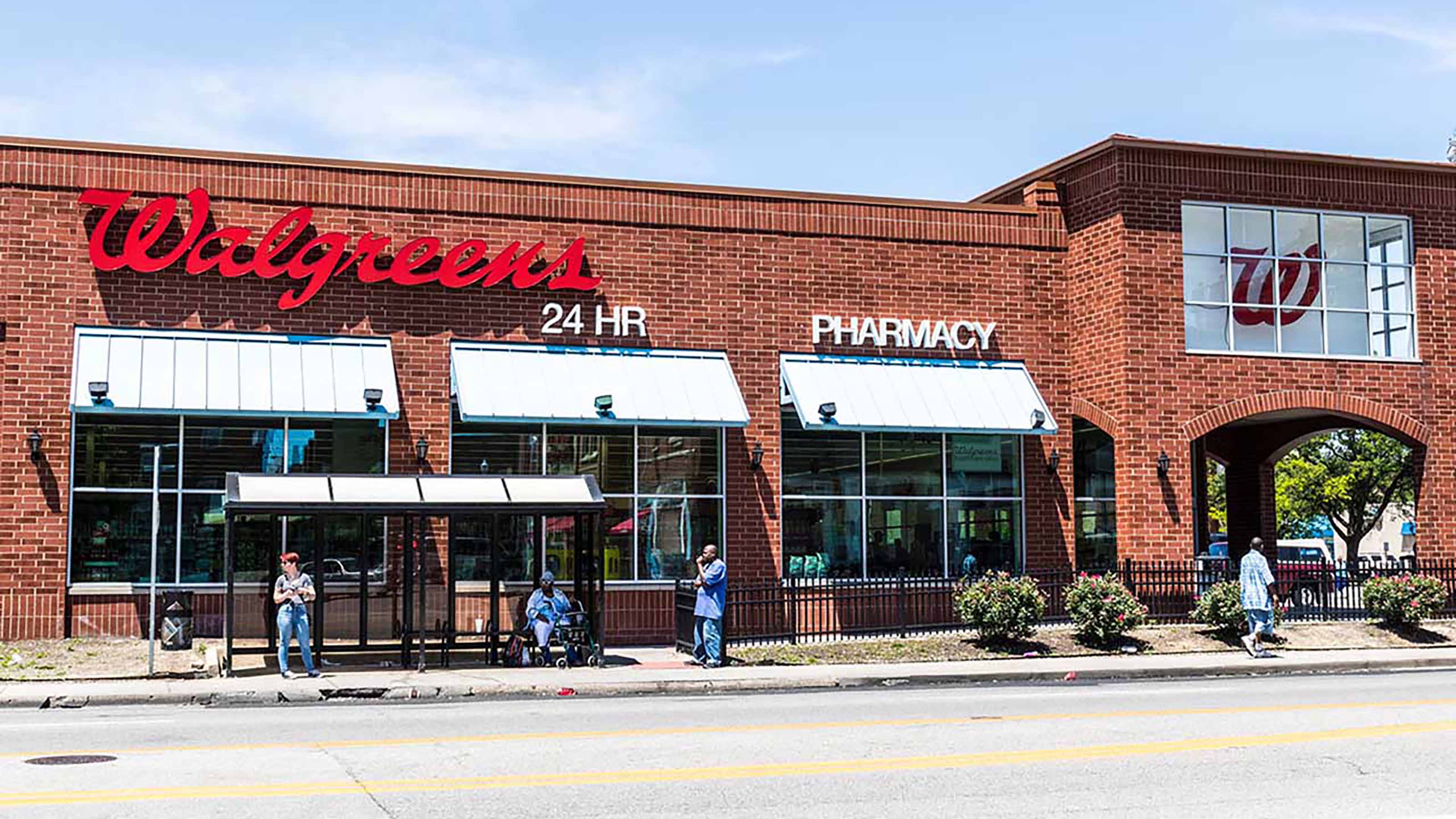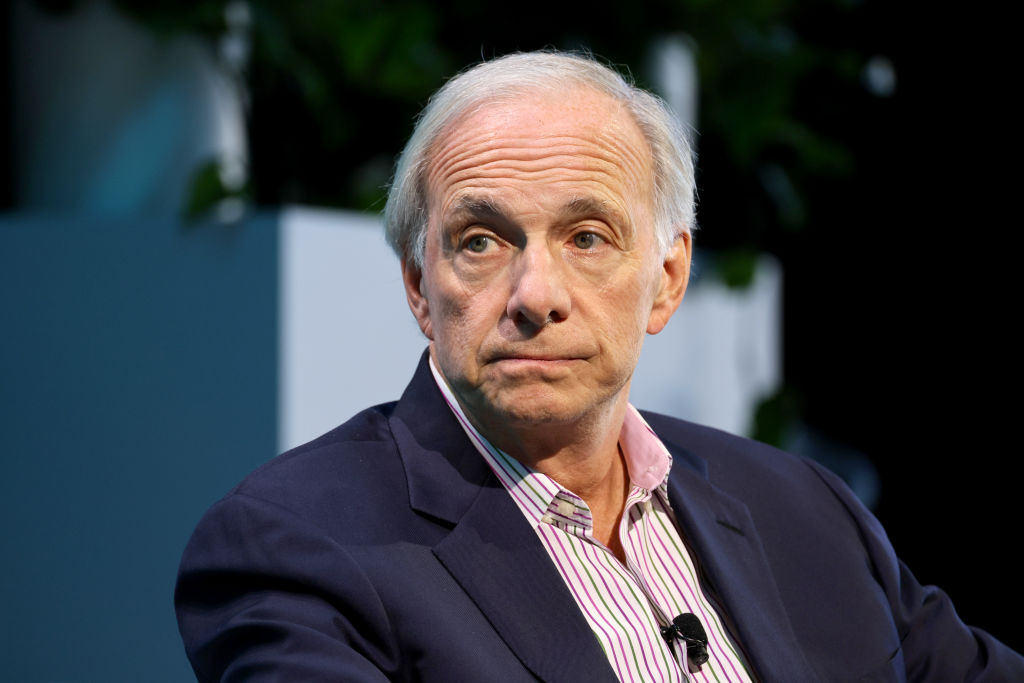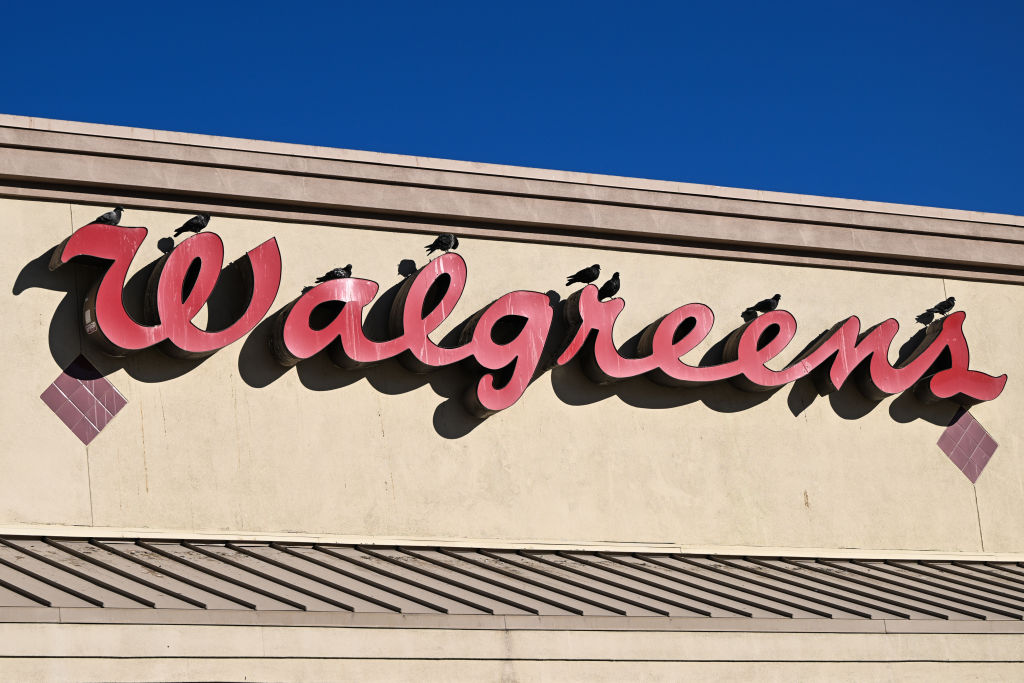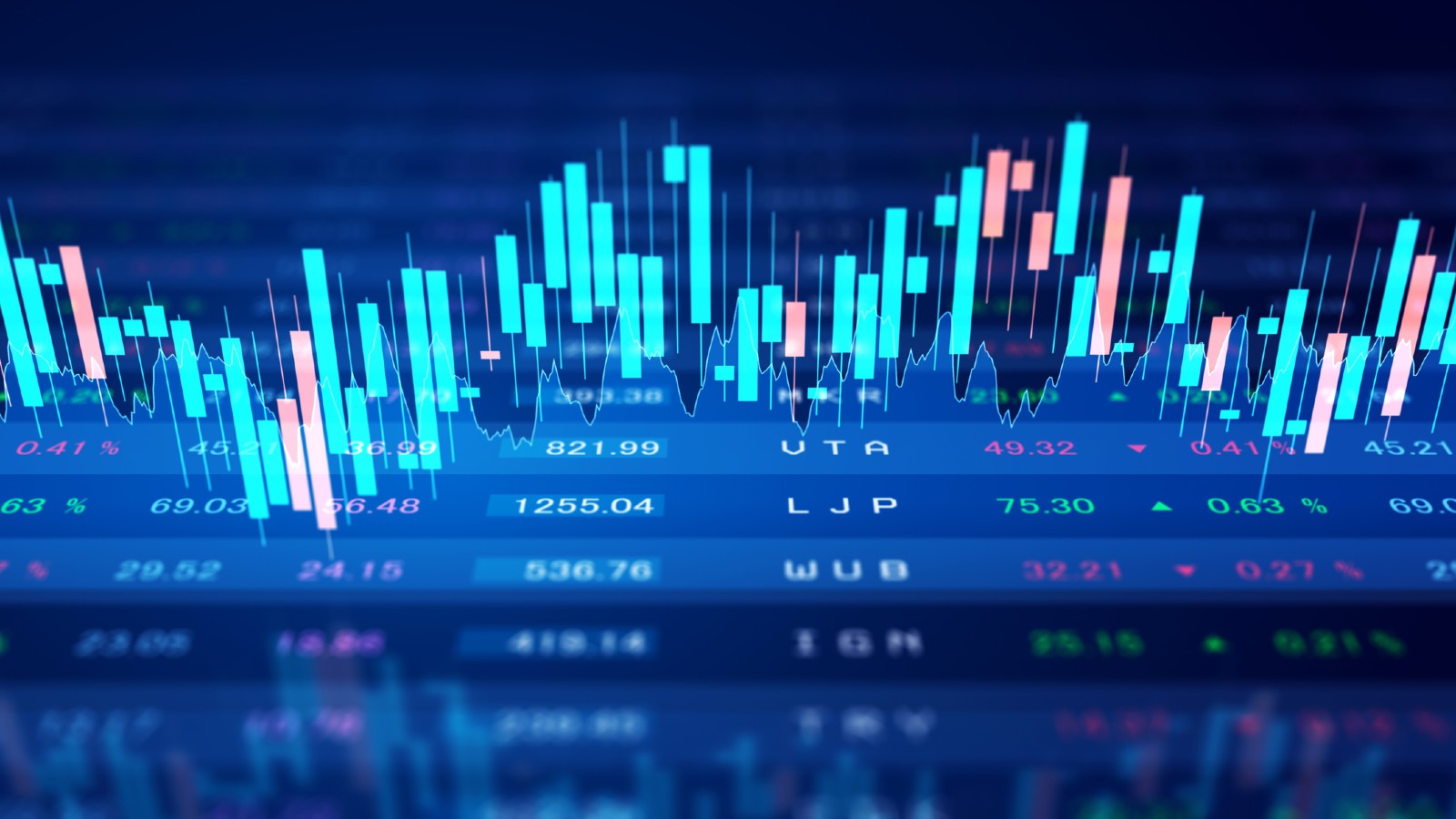5 Special Situation Stocks for Growth & Income
Special situation stocks create event-driven opportunities for investors. Here are five that are worth a closer look.


Investors should consider special situation stocks for their ability to create growth and income opportunities.
Most investing is sector-driven. Even the S&P 500 is divided into 11 neat sectors, and most of Wall Street is preoccupied with which sectors they think investors should underweight and overweight at any given time.
Overweight energy stocks when oil prices are rising. Underweight consumer discretionary when inflation is afoot. Overweight technology when a transformational shift is at hand, such as artificial intelligence (AI) technology.
But not all stocks can fit into such neat categories. Some that don't are known as special situation stocks.
What are special situation stocks?
Many special situations are event-driven: a merger, acquisition or spinoff, for example. It could also be a change in a market that plays into a company's unique skill set. For example, the Inflation Reduction Act of 2022 which allocates $370 billion for energy security and climate change initiatives plays into the strengths of infrastructure solutions provider Quantas Services (PWR) detailed below.
Special situations can also arise from some sort of dislocation on a balance sheet. For instance companies can own real estate that is likely to be worth much more than its carry value on the books, and this has implications for their dividends.
And special situation stocks can get a boost from world events, such as the impact of the Russian invasions on shipping rates for crude oil carriers or a potato shortage driving the price of french fries.
Sector investing is popular for a reason. It works and provides opportunities for strategic diversification. But for investors looking for growth or wanting to earn outsized dividends, special situation stocks merit consideration as well.
With that in mind, here are five special situation stocks worth a closer look.
Data is as of June 27. Dividend yields are calculated by annualizing the most recent payout and dividing by the share price.

CVS Health
- Industry: Healthcare plans
- Market value: $88.1 billion
- Dividend yield: 3.5%
The question investors need to ask themselves is whether the transformation of CVS Health (CVS, $68.68) from a retailer to a healthcare company will continue – and whether it will be able to keep paying and growing its hefty 3.5% dividend.
CVS paid about $3 billion in dividends last year, and repurchased about $3.5 billion of its own shares. The company's capital expenditures, about $2.7 billion, are modest, and will continue to be so, especially if it makes good on its commitment to close 900 stores between 2022 and 2025. Adding all that together, CVS Health's core commitments are about $9 billion and cash flow from operations is about $16 billion.
Should cash flow dip, CVS and its shareholders have a safety net of sorts in the form of real estate. The company is carrying nearly $7 billion of property on its balance sheet, and this figure is net of depreciation. The current value of the real estate, though unknown, could be much higher, since this asset class tends to appreciate in the real world, even though it depreciates on corporate balance sheets.
While a look at the cash flows inspires confidence, a look at CVS's income statement is a little more perilous. 2022 earnings of $4.1 billion were about half of earnings for 2021, thanks in part to opioid litigation charges to the tune of nearly $6 billion.
In the process, the dividend payout ratio – the percentage of net income that gets paid out in dividends – grew from a safe and modest 33% to a less safe and less modest 70%. Presumably, CVS's opioid liabilities are behind it – the 10K reports that 2022 agreements "resolve substantially all opioid claims against the Company" and that profitability to historical averages will return.
The challenge for investors is that the averages are just that: average. Shares of the special situation stock are trading today just about where they were in November of 2018, when CVS Health acquired giant healthcare insurer Aetna for a whopping $69 billion.
This year will provide some comfort, or discomfort, that growth is at hand. The consensus 2023 forecast is $7.28 per share, a big jump from the 2022 opioid-laden earnings per share of $3.14.

Walgreens Boots Alliance
- Industry: Pharmaceutical retailers
- Market value: $24.7 billion
- Dividend yield: 6.1%
Speaking of top dividend stocks, Walgreens Boots Alliance (WBA, $28.64) has an even heftier yield than CVS, at 6.1%. Earning a 6.1% yield ad infinitum is attractive, even more so in a tax-deferred account, but only if Walgreens can continue to pay it.
When companies cut their dividend, investors suffer a loss of income. But they often lose principal, too – and sometimes a good deal of it because cutting a dividend is up near the top of the seven deadly sins of Wall Street.
So, can this special situation stock continue to pay its dividend?
Yes … probably … maybe.
First, total dividends in 2022 were about $1.7 billion. Net cash flow from operations was about $4 billion, meaning the company is generating more than twice the cash it needs to pay the dividend.
Still, there are lots of uses for corporate cash beyond paying dividends, and these competing needs could threaten the dividend. But Walgreen's has an asset, literally, that few other companies do that could keep the dividend safe for years to come: real estate.
Walgreens is carrying about $9 billion of real estate on its books. And remember, the real estate listed on the balance sheet is the depreciated value. But real estate depreciation is an accounting anomaly. Most real estate appreciates from the cost it was acquired for. Net-net, with a sale or a sale and a leaseback of some or all of its properties, WBA could keep the dividend gravy train chugging along for years to come.
The other dimension to WBA's "special situation stock" status that investors should consider is whether to buy into the company's nascent turnaround. The Dow stock has been on a decline since 2015. During this time, CVS has largely eaten its shorts with a foray into healthcare through the acquisition of Aetna and a host of other care-related companies. This left Walgreens selling just drugs and the incidentals that went with them when consumers stopped into the store.
But the battleship could finally be turning with the acquisition of a pharmacy company, a care coordination company, and its flagship healthcare investment, a controlling stake in VillageMD with 680 primary care locations. These moves are starting to show with a slight uptick in forecasted revenues in 2023, and an uptick in earnings for 2024, according to Value Line research. These seem modest, and they may well be, but healthcare is tricky, and winning takes time.
Growth at Walgreens could play out constructively for investors even if it doesn't send the blue chip stock soaring. Higher profits and more cash coming in may cause the company to increase the dividend. For buy-and-hold investors, their basis is fixed, and increases in cash paid per share simply raises their cash-on-cash yield. Any improvement on a 6.1% yield would indeed be gravy.

International Seaways
- Industry: Oil & gas midstream
- Market value: $1.7 billion
- Dividend yield: 6.5%
In the seven years since its spinoff into public ownership, International Seaways (INSW, $35.30) stock has been mostly range-bound between $14 and $28. But earlier this year, it spiked to $52, and has since settled in the mid-$30s.
What has happened?
International Seaways operates very large crude carriers known as VLCCs that are part of a global fleet moving oil between ports all over the world. VLCC rates have been going up, up, up, taking INSW's sales and earnings with them.
In 2022, total revenue more than tripled, from $273 million to $865 million, while the bottom-line figures went from a net loss of $3.48 per share to a net gain of $7.85. Net-net, INSW is on fire, but that's probably the wrong imagery for an oil tanker company.
In February, INSW declared a supplemental dividend of $1.88 per share, in addition to the company's "regular" 12 cents per share quarterly dividend. In May, it declared another $1.50 per share supplemental dividend following a first-quarter report that saw revenue up 184% year-over-year and earnings once again swinging from a loss of 26 cents per share to positive $3.47.
The source of all of this supplemental income are spot rates for VLCCs that have risen more than 50% since May of last year to approximately $34,000 a day. There are credible reports that rates have been, at intervals, over $100,000 and London-based investment bank Clarksons Securities is forecasting 2024 rates of $90,000.
The increases have been driven by "reopening," an old theme in the U.S., but still very relevant for China, and the war in Ukraine. Sanctions on Russia have dramatically lengthened trade routes by taking Russian ports off the map, increasing costs, but turbocharging this special situation stock's top and bottom lines.
For a company operating in a volatile industry, a quick look at some financial metrics is in order. International Seaways is basically unlevered with a debt-to-equity ratio of less than one, which is a good start.
The company is fairly liquid, too, with current assets at 2.5 times current liabilities. Cash flow from operations is more than twice its capital expenditures, which are primarily for new vessels and upkeep. Interestingly, INSW does a brisk business in disposing of its old ships, and for the last three years, this has either funded or largely funded its new ones.
Energy markets are complex and the prices for oil, as well as downstream suppliers such as INSW are difficult to predict. However, in this case, it may be reasonable to speculate that sanctions on Russia have redefined the global petroleum market in ways that it will not revert back to if and when sanctions are lifted. As a result, VLCC rates – and INSW earnings and revenue – may remain elevated for the foreseeable future.

Quanta Services
- Industry: Engineering & construction
- Market value: $28.3 billion
- Dividend yield: 0.2%
Between 2007 and 2020, Quanta Services (PWR, $194.66) traded in the $18 and $30 range. But the stock took off in the early innings of the pandemic and now stands at about $195. What happened?
The company provides infrastructure solutions for energy, utility and communications companies. So increased focus on the grid brought on by wildfires linked to utility companies, extreme weather events, increased cyberattacks, and momentum in wind and solar power have all played into Quanta's hands.
To make its case for growth, the company trots out some $3 trillion in spending this decade for initiatives ranging from carbon capture ($90 billion) to electric-vehicle charging stations ($38 billion) to grid expansion, refurbishment and digitization ($132 billion).
In a bit of a puzzle, despite the lather in infrastructure spending, Quanta's earnings have not appreciated dramatically since 2020. That year, earnings per share were $3.07 and for 2022 earnings were $3.32, a respectable though perhaps not laudable increase.
A closer examination of the company's cash flow statement and footnotes reveals a bright spot however. In 2022, a charge of about $196 million hit PWR's income statement for the amortization of intangible assets – meaning a non-cash expense – from the 2021 acquisition of Blattner, a renewable energy infrastructure solutions provider. These charges divided by shares outstanding equals about $1.36 per share, which would provoke some kind of tax treatment, but would nonetheless add a much growthier number to the bottom line.
And the analyst community seems to be expecting great things from Quanta. The average per-share earnings estimate for 2023 is $4.83, nearly 50% more than in 2022. Estimates for 2024 are $6.29 per share.
What may be adding to the enthusiasm in Quanta shares of late is last year's Inflation Reduction Act which added another $370 billion to the pot in the form of energy security and climate change initiatives. Quantas, meanwhile, is guiding for 2023 earnings between $4.62 and $5.11 per share.
The work that Quantas does is not easy and it requires skilled workers. Investors with more than dollars and cents on their mind might take a closer look at this special situation stock because of its commitment to training workers for good paying jobs.
PWR has partnerships with several unions, the military and universities. In addition, Quantas owns and operates the Northwest Lineman College for electric power, communications and underground utility infrastructure.

Lamb Weston Holdings
- Industry: Packaged foods
- Market value: $16.7 billion
- Dividend yield: 1.0%
The recent potato shortage in Idaho made the crop more expensive for processors like Lamb Weston Holdings (LW, $114.30). But the company has been able to pass on the cost to its customers – retailers and restaurants – and then some. The reason? Everybody loves fries.
In its fiscal third-quarter 2023 report, sales rose 31% year-over-year to nearly $1.3 billion.
However, because the increase in revenue was driven by prices alone, almost all of the increase went to the bottom line, with earnings per share growing 127% for the third quarter and 170% for the first nine months of fiscal 2023.
However, the question investors need to be asking is will potato prices remain elevated? The source of the shortage has been reductions in acreage, far more systemic than say a weather-related reduction in yields.
Regardless of market dynamics, LW is dedicated to growth. In 2022, the company acquired the remaining equity interests in its joint venture with Meijer Frozen Foods B.V. – a major supplier of frozen potato products in Europe and the Middle East. Lamb Weston has also been investing over the past two years in new french fry processing lines in the U.S., Argentina, China and the Netherlands.
This special situation stock appears to be committed to returning capital to shareholders, too, with share repurchase authorizations in 2018 and then again in 2021. And the company is also a dividend grower, raising the quarterly cash payout from 18.75 cents per share in 2017, to the current indicated rate of 28 cents per share, for an average annual increase of nearly 7%.
Get Kiplinger Today newsletter — free
Profit and prosper with the best of Kiplinger's advice on investing, taxes, retirement, personal finance and much more. Delivered daily. Enter your email in the box and click Sign Me Up.

-
 Ray Dalio Is Ringing Alarm Bells About 'Something Worse Than a Recession'
Ray Dalio Is Ringing Alarm Bells About 'Something Worse Than a Recession'Bridgewater founder Ray Dalio has been sounding off about his concerns for the global economy as a result of tariffs and certain policies, as well as other factors.
By Alexandra Svokos
-
 Who Pays the Most Taxes in the U.S.? Tax Burden by Age
Who Pays the Most Taxes in the U.S.? Tax Burden by AgeTax Burden Polls show that most people feel like taxes are unfair. But which age group bears the brunt of the tax burden in the United States?
By Kelley R. Taylor
-
 Stock Market Today: Tariff Talks Drive Another Up-and-Down Day
Stock Market Today: Tariff Talks Drive Another Up-and-Down DayTrade war negotiations are happening, but the "fear gauge" is gyrating, and investors, traders and speculators are still searching for signs of a bottom.
By David Dittman
-
 Stock Market Today: Stocks Swing Higher on Powell Speech
Stock Market Today: Stocks Swing Higher on Powell SpeechInvestors cheered after Fed Chair Powell repeated his confidence in the strength of the U.S. economy.
By Karee Venema
-
 Stock Market Today: Stocks Recover From Trump-Zelensky Slide
Stock Market Today: Stocks Recover From Trump-Zelensky SlideReports of a combative meeting between the two leaders sent stocks temporarily lower Friday afternoon.
By Karee Venema
-
 Why Walgreens Suspended Its Dividend
Why Walgreens Suspended Its DividendWalgreens stock spiraled Friday after the pharmacy chain suspended its dividend amid continued turnaround plans. Here's what you need to know.
By Joey Solitro
-
 Stock Market Today: Dow Slides 697 Points on Super-Hot Jobs Data
Stock Market Today: Dow Slides 697 Points on Super-Hot Jobs DataWhen the December nonfarm payrolls report hit the tape, there was no question which way stocks would go at Friday's opening bell.
By David Dittman
-
 Why Walgreens Is the Best S&P 500 Stock After Earnings
Why Walgreens Is the Best S&P 500 Stock After EarningsWalgreens stock is soaring Friday after the embattled pharmacy chain reported strong earnings and gave an upbeat outlook.
By Joey Solitro
-
 How to Hedge Against Trump's Tariffs
How to Hedge Against Trump's TariffsDonald Trump is taking action on tariffs and this could have a big impact on public companies. Here's how investors can prepare.
By James K. Glassman
-
 Stock Market Today: Stocks Rally on Strong Netflix Earnings
Stock Market Today: Stocks Rally on Strong Netflix EarningsMega-cap tech leads the charge as markets rise for a sixth straight week.
By Dan Burrows
